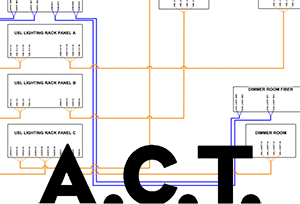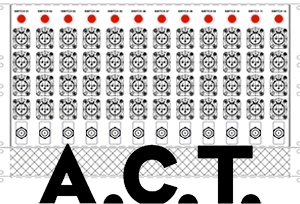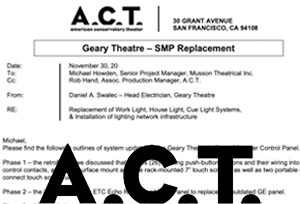ACT Geary Theatre | San Francisco, CA
Part 3: Understanding of the Control System
Scattered around the facility are 29 push-button light switches, each with a wire running through conduit, and returning to the audio equipment room in the upstage left corner of the facility. These wires directly connect the switch on the wall to the low-voltage contact closure inputs installed in the sound rack. It was imperative that everyone involved understood that replacing the switches, and most importantly the cable running to them, was outside of the scope of replacement. We needed to find a solution that allowed us to tie into the cables in the audio room and use them to do the same thing in a more modern system.
The fist step to this was comprehending the switch system that was installed into the San Francisco facility during the time that I was attending high school in Michigan, and decades before I would understand how any of that equipment functioned. Turning to the drawings that I received from the theatrical lighting systems manufacturer, I was able to take their initial CAD file and distill some semblance of understanding of what runs of conduit connected between the network of junction boxes and switches, and how all of this was actually installed. I made it a priority to doubly confirm that all cables were labeled on both ends in a way that was still legible and that made sense before we headed towards a renovation proposal. With all of this information in drawings and confirmed, the next step was to meet with a manufacturer service representative for ETC, the company that initially commissioned the original system back in 1995. Together we determined the best path forward that allowed for the needed integration with the original switches and a forward looking solution for the venue.
Along with the installation of the ETC Unison contact closure interface cabinets and the power and data connecting them to the main control processing unit was the desire to replace the relay panel that was no longer manufacturer supported and was the next weak link in the system. It was quickly determined that replacing this unit with the ETC Echo relay panel would be a necessity in this first phase of installation, as it required the hiring of a licensed electrician and proper permitting to achieve.
With all of the electrical elements in these first two phases, the next most pressing elements was connecting the new system controller to the two portable stage manager panel control units and integrating new touch-screen control panels in strategic locations where more than a single light switch would be beneficial. Connecting this equipment and the performance lighting equipment throughout the facility would require an update to the ad-hoc network infrastructure that had accumulated throughout the previous decade.





